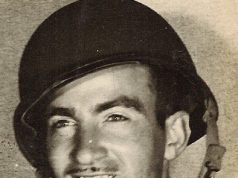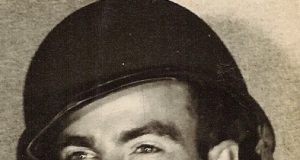by Bruce Meredith
editors note: Speaker Tom Foley used to tell incoming freshmen members of the House, “If you look up at that lighted dome in the evening on your way home from work and it doesn’t make you a little bit emotional, it is time to leave.”
I think almost anyone who has had the privilege of working in the Capitol has a special felling about the building that is hard to describe. It is the first building ever constructed for the purpose of constraining the power of an over zealous executive. It is the essence of what makes American different.
No one I know has spent more time in and around the Capitol than Bruce Meredith who first worked there as a young staffer on the Appropriations Committee in the 1960s. After the events of January 6th he sent me this piece describing how deeply the attack on the Capitol impacted him. I thought I should share it.
I was overcome by the events of the last few days. It was not only because of the attack by a crazed, demented mob on the operations of our government required by the Constitution. I was also deeply disturbed by the desecration of the most sacred place we have in our Government. The magnificent Capitol Building of the United States was savaged, torn asunder by the scum of our country. As the afternoon wore on nobody came to protect it from brutal aggression. I was sickened beyond understanding.
I had my offices in several places in the Capitol building for over 20 years. I worked there day and night and weekends and was always inspired by the “good ghosts” of the Republic that permeated the walls. History speaks from every nook and cranny. During the Civil War rooms down the hall from one of my offices became ovens for baking bread for the Union Troops. The Great Halls and large rooms of the Capitol were turned into medical clinics to care for the wounded.
Etched holes are visible in several places in the interior stone walls of the Capitol. Legend has it they are the mark of musket balls from the British sack of the Capitol during the War of 1812. President Truman took the call telling him Roosevelt had just died in a small room on the first floor of the House. That phone is still there on the very same table that stood there then.
Layers below the center of the Rotunda is a tiny room. It was where the builders of the Capitol assumed George Washington would forever lie. An opening in the Rotunda floor would let visitors view him. Washington and his family would have none of that. He is buried at Mount Vernon. That little room holds the Catafalque on which Lincoln lay in state in the Rotunda. It is moved to the Rotunda for other honored Americans when they pass on.
My favorite ceremonial room is Statuary Hall, the original chamber of the House of Representatives. A brass plate in the floor marks the spot where John Quincy Adams died. Hidden behind the drapes of that room on the second level was a hideaway office where I spent two years working on the Congressional Budget and Impoundment Control Act of 1974.
Our Committee held a fine formal celebration on its 100th birthday In Statuary Hall. The President came to speak on that occasion. I participated on behalf of the Committee in meetings to ensure safety during the celebration. Fishbait Miller was the legendary House Doorkeeper then. The Secret Service made us walk through the event on three different occasions to satisfy their concerns for the safety of the President. They even discovered my “hideaway” office, which at that time was not known to the Architect of the Capitol.
In that very room, Statuary Hall, the first formal home of the U.S. House of Representatives in the U.S. Capitol building, I saw on TV on January 6, 2021 a disgusting slug from the besieging mob hoist the Confederate Flag.
At the foot of the Capitol Building on the West Front is a superb statue of General Ulysses S. Grant set in the middle of a battle scene. It was Grant who led the destruction of the Confederate Forces that attacked our Republic. Three times Confederate armies crossed into Maryland. They wanted to sack the Capitol, pillage Washington, terminate the Republic, and establish their own empire. Each time they were repulsed at a total cost of thousands of Union Soldiers.
The battle that stopped the last Confederate Army invasion of the North was in July 1864 at Fort Stevens. The Fort is located just a few miles up Georgia Avenue within sight of the Capitol Building. The mission of General Jubal Early and his over 20,000 battle seasoned troops was to sack the Capitol Building, ravage Washington and seal the defeat of Lincoln in the Fall election. It was not to be.
Our smallest national cemetery is just a few blocks up Georgia Avenue from Fort Stevens. A memorial for 41 soldiers it holds states: “Sacred to the memory of our comrades who gave their lives in defense of the National Capitol, July 12, 1864.” Annual meetings are still held at Fort Stevens to celebrate the victory.
During the Civil War the Army built 54 forts connected by roads to carry ammunition and supplies quickly between them. Many miles of trenches were also built for soldiers. Washington was known as the best defended city in the world. It functioned as the key logistical support center for the war effort. The Capitol Building stood unmolested as an inspiration to citizens in the North. President Lincoln never ran from the city for cover.
In 1968 I had an office on the west side of the Capitol Building overlooking the Terrace and the Mall. I looked through my window the morning after Martin Luther King was assassinated. Black clouds of smoke were rolling over the Mall. The city was burning. I also saw soldiers. To protect the Capitol they were setting up sandbags and a machine gun at the top of the steps leading to the Terrace. At O Dark Thirty the next morning I reported to work to continue Committee Hearings on the Federal Budget. I had to step over soldiers who that night slept in the tunnel from the Longworth Building to the Capitol.
On January 6, 2021 we have an unprotected Capitol Building mutilated by a plundering mob. A lone insurrectionist stands on the Floor of the original United States House of Representatives in the Capitol Building. Unchallenged this despicable barbarian raises the Confederate Battle flag. He trashes the honor of those who defended the Capitol from the earliest days of the Republic. He stains the reverence we hold for those who have fought far and wide around the world to defend the principals the Capitol embodies.
What to expect in the near future? We hear that the insurrectionists have tasted victory and are eager to return with weapons to continue their carnage. In 1943 brilliant American cryptologists broke the code of the Japanese Navy. They enabled Admiral Nimitz to plan a surprise attack. In the Battle of Midway his forces sank the four largest carriers in the Japanese Navy. Some have declared it the most significant naval battle in history. I can only hope our security forces are reading the internet messages of today’s insurrectionists and remember what Nimitz did with such information in the Battle of Midway.











